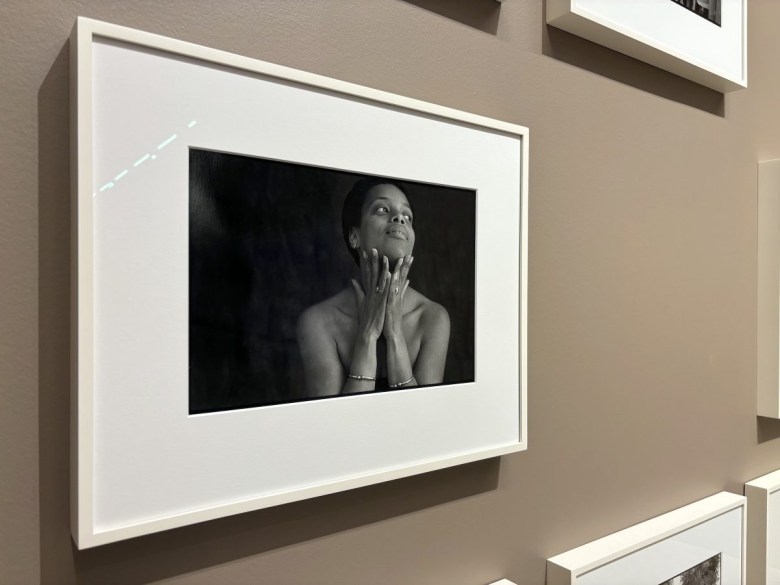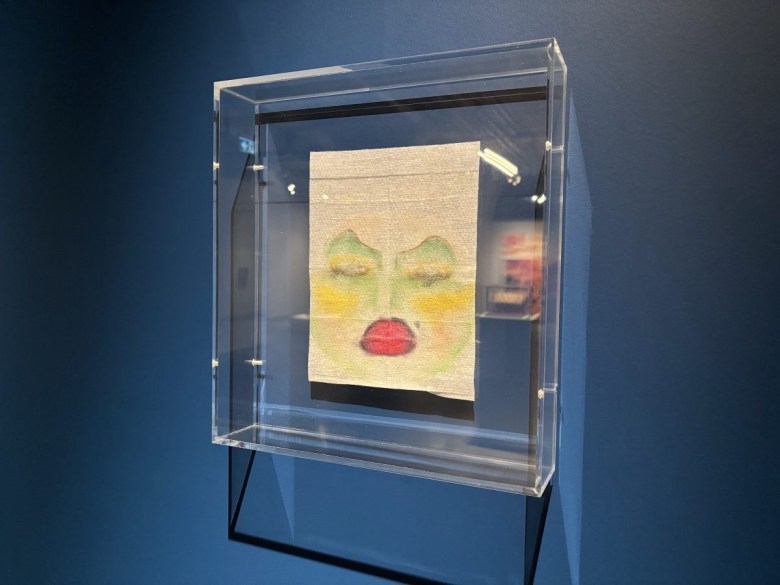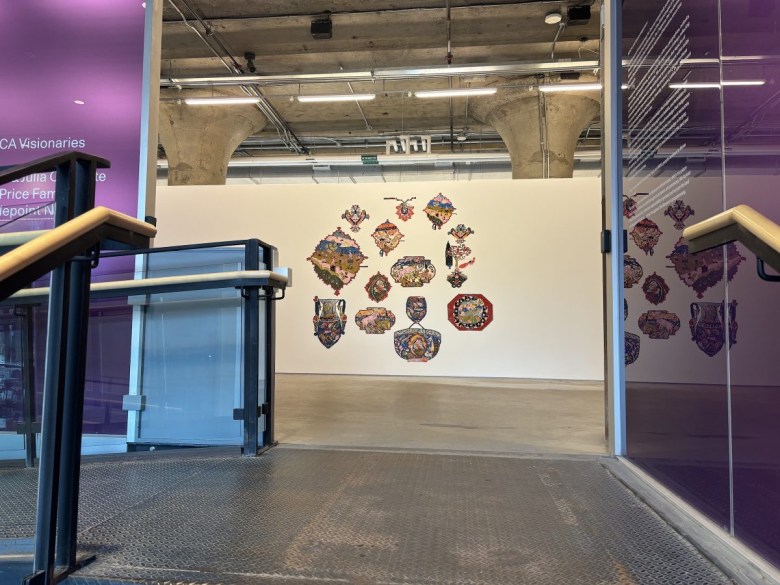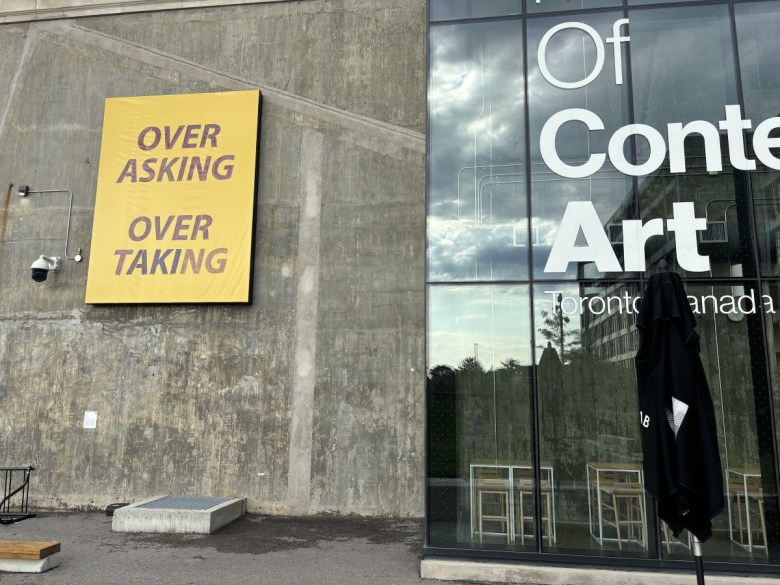Is Toronto’s Art Triennial Just for Those “In the Know”?

TORONTO — In its second iteration, the Greater Toronto Art 2024 (GTA24) triennial at the Museum of Contemporary Art (MOCA) connects art-making with ever-shifting actions in the area’s flawed formation.
Until the late 1990s, when it was amalgamated right into a single-tiered City of Toronto, the Greater Toronto Area (GTA) was Metropolitan Toronto, a hodgepodge of municipal governments. This megacity resulted in transit deserts in outlying boroughs and diminished democratic participation in native points. During this era, the conservative authorities of Ontario, the province that incorporates Toronto, considerably reduce cultural providers, together with arts organizations and youth packages.
GTA24 at MOCA, situated in Toronto’s West End, encourages guests to mirror upon their positionality inside this area. The triennial maps what it means to be an artist from right here, from some place else however now residing right here, or from right here however residing some place else. However, the concentrate on cartographic pinpoints, as demonstrated by an infographic on the fundamental ground that maps the place artists have been born and dwell, reveals gaps in connections between artists and assets, significantly regarding the area’s closed or reduce areas, organizations, and packages. (It’s value including that cuts in arts funding following the swell of COVID-19 emergency response advantages have prompted many arts organizations, festivals, and studios to lose sponsorship, situation pleas for public help, or announce short-term closures.)
GTA24 options interdisciplinary works by nearly 30 artists, duos, and collectives related to the GTA area, relationship from the 1960s to immediately. Main ground installations by Toronto-based artists June Clark and Sukaina Kubba, born greater than a technology aside in Harlem and Baghdad, respectively, set up the present’s emphasis on artists’ topic positions. (Clark is having a second proper now — she’s at present the topic of solo reveals at the Art Gallery of Ontario and the Power Plant.) Kubba’s sculptural “drawings” of images from her household’s Persian rugs, product of Polylactic Acid (PLA) filament, greet guests at the entrance. Clark’s 1970s and ’80s black-and-white images seize her views of the metropolis’s individuals and locations: practice tracks, a Kensington Market fruit stall, a Black lady exhibiting off her West Indian gold bangles as she strokes her neck and gazes into the distance. The final, a self-portrait, captures a previous self in repose, taking in her environment.
The curatorial group — MOCA’s Kate Wong, David Zwirner’s Ebony L. Haynes, and unbiased curator Toleen Touq — goals to emphasise “the crucial roles artistic language plays in developing more sustainable and caring ways of living together and in building solidarity,” in accordance with its exhibition textual content. This invitation into intimacies is in productive distinction with MOCA’s architectural character. Remnants of the constructing’s previous, as a WWII aluminum foundry, for occasion, echo in works like Caroline Azar and GB Jones’s “The Bruised Garden” (2012), with its churning soundtrack — dramatic synths, equipment chugging, the goose steps of army troops. The unique model purportedly included a element that analyzed how the Third Reich used black triangular symbols to “mark women as asocial, sexual outlaws, fortune tellers, and nonconformists.” While this didactic element speaks to GTA24’s broad concentrate on positionality, it introduces a component of psycho-geographic remapping of the previous that facilities the fringe, the marginal, and the underrepresented.

In addition to the stairwell set up, an intriguing collection of charcoal drawings by Jones of haunted Southern Ontario buildings are displayed on the second ground. While these, alongside black-and-white photographs from the 1980s Toronto punk scene wherein Jones was concerned, loosely handle the Greater Toronto Area scene-making and creativeness, the inclusion of Jones’s collages made in collaboration with artist Paul P. felt like an excessive amount of work by one artist. Why the predominance of artwork by Jones and others, like Ésery Mondésir? Amid this intergenerational constellation, have been these artists meant to exemplify the triennial’s themes? The curators don’t make it clear.
Intentionally or not, I typically felt that GTA24 revealed the transactional nature of the area’s small, typically insular inventive cliques and communities. It is transactional out of necessity resulting from a shortage mindset affirmed by its establishments, arts organizations, and collectives. Just as Metro Toronto was a hodgepodge of municipalities, GTA24 is a mishmash of previous native reveals, with the curators cherry-picking artists who’ve had recent retrospectives or taken half in previous regional surveys. Granted, triennials are purported to mirror latest developments and considerations, or fee new work. GTA24 checks all these bins. But, with the exception of didactics mentioning artist P. Mansaram’s friendship with Canadian thinker Marshall McLuhan, there’s not a lot intel about the actions of those artists in the GTA area, or the areas or circumstances wherein they’ve created their works. The assumption is that you need to be in “the know” to understand it.


Some of GTA24’s works handle how navigating the Greater Toronto Area can depart you misplaced or excluded by the considerably closed-off arts group. Lisa Myers’s “Overture for Sterling Road” (2024) a “quest-style” audio and augmented actuality stroll, addresses the proliferation of actual property improvement round MOCA. The work compels guests to level their telephones at the once-industrial Railpath route behind MOCA to see squelching, digitally animated blueberries, highlighting how immediately’s skyline, filled with building cranes and rental towers, represents one other type of colonialism in the type of actual property hypothesis and gentrification. But navigating the work wasn’t simple — I needed to toggle between a print map and two browser tabs enjoying the audio soundtrack on SoundCloud after which the Augmented Reality activations. A extra built-in on-line answer can be welcomed. Lotus L. Kang’s work, a greenhouse with meals objects like kelp knots and biscuits solid in aluminum and pewter, respectively, affirms the emphasis on contemplation and private that means but in addition feels impenetrable and distant, significantly since a transparent stanchion indicated that guests couldn’t enter. It jogged my memory of public inexperienced areas like Dufferin Grove and Allan Gardens surrounded by encampments for unhoused metropolis residents that proceed to pop up and be torn down.
Oliver Husain and Kerstin Schroedinger’s three-channel video set up “DNCB” (2021) exemplifies the use of inventive language to light up under-recognized sociopolitical and cultural-historical contexts that the curators intention to foreground. Two projections play constantly. One cycles by archival analysis in the method of a microfiche show; the different reveals painted arms sensually touching a leather-based bag or pulling at a tank-topped torso in a extremely stylized and neon after-hours setting. The work addresses the historical past of Dinitrochlorobenzene, a poisonous coloration movie processing agent that was an experimental AIDS therapy in the 1980s and ‘90s; most sudden is the materiality that comes by in the layering of the two projections. “We had so little to lose,” an older male voice explains, a part of an audio soundtrack that includes interviews with native AIDS activists reflecting on the interval’s desperation and wish for different medicines.

Two works on the third-floor gallery discover otherness. Theo Jean Cuthand’s two movies display on a loop on a comically outsized, pseudo-vintage TV console surrounded by grey carpeting. The setting, made to resemble the tv viewing room of a hospital psych ward, displays the artist’s voiceover about his expertise with psychological sickness. On the south aspect of the area, behind a midnight blue wall, is Sin Wai Kin’s Turner Prize-nominated movie “A Dream of Wholeness in Parts” (2021), which merges drag with conventional Chinese dramaturgy. Through the intimacy of the voiceover, each installations discover the way it feels to take care of the sense that you just’re not purported to be right here.
How many people weren’t purported to be right here? How many artists, writers, curators, and humanities staff have struggled to search out their means in the Greater Toronto Area? The GTA24 triennial has nice potential, and I feel it can develop in its mandate and strategy. To its credit score, GTA24 displays many inventive practices and disciplines. But I got here away feeling a scarcity of curatorial context to elucidate how the taking part artists have engaged with being from or now residing in the GTA, and sensing a take away between the viewer and the artwork.
At the identical time, the image that it presents about how inventive languages have each flourished and flailed on this area means that all of us appear to function at a distance. The art work that we make and work together with displays these struggles, however maybe additionally potentialities.

Greater Toronto Art 2024 continues at the Museum of Contemporary Art Toronto (158 Sterling Road, Toronto) by July 28. The exhibition was curated by Kate Wong, Ebony L. Haynes, and Toleen Touq. On Sunday, July 21, GTA24 will current Solo Organ Concert, a public program that includes taking part artist Mani Mazinani and collaborators.





